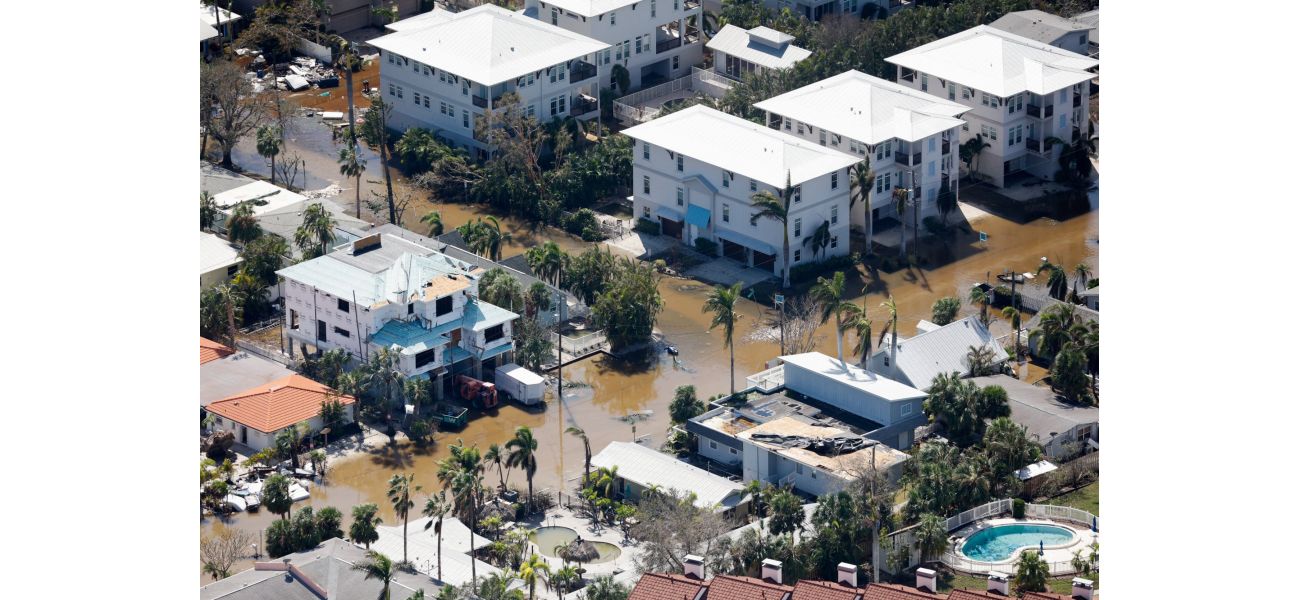45 years ago, the largest storm occurred and a new record may soon be set.
Typhoon Tip was larger than the distance from London to Romania, measuring at 1,380 miles in diameter.
October 12th 2024.

The streets of Siesta Key, Florida were submerged in water after the powerful Hurricane Milton made landfall on October 10th. This monstrous storm caused chaos and destruction, forcing thousands of people to flee their homes. Despite its size and strength, Milton was not the largest storm on record. That title belongs to Typhoon Tip, which ravaged the Pacific 45 years ago.
Typhoon Tip was a super typhoon, measuring a whopping 1,380 miles in diameter. It roamed the ocean for 20 days and had a central pressure of 870 mb, much lower than Milton's 897 mb. The typhoon reached its peak intensity on October 12, 1979 before hitting Japan and eventually dissipating. While it has been decades since the world has seen such a massive storm, experts warn that it may not be long before another one breaks this record.
Jim Dale, the founder of British Weather Services, predicts that hurricanes will continue to become stronger as sea temperatures rise. "On a global scale, we are seeing a clear trend in this direction," he told Metro. He also pointed out that while Typhoon Tip was not the most deadly storm on record, it was one of the most studied. In fact, the US Air Force flew numerous research missions into the typhoon to gather data and aid in storm research.
Meanwhile, Hurricane Milton came just after Hurricane Helene, delivering a devastating one-two punch to the southern US. It quickly intensified into a Category 5 storm in the Gulf of Mexico, setting a record for the fastest storm to do so. And with the current hurricane season showing no signs of slowing down, experts fear that we may see more intense and damaging storms in the future.
Although Tip was a massive storm, it did not cause as much destruction as the deadliest storm on record, the Bhola Cyclone. This tragic event claimed the lives of up to half a million people in Bangladesh. However, Mr. Dale notes that the effects of climate change are making hurricanes more dangerous. "We may not see an increase in the number of hurricanes, but the ones we do get will be stronger," he explained. "It's like instead of getting a soft punch, we are getting a really big punch that knocks us out."
In fact, some meteorologists are even discussing the possibility of adding a new category, Category 6, to the current hurricane rating system. "Nobody has officially made the change yet, but it's a topic of discussion," Mr. Dale revealed. And with the hurricane season still ongoing, there is a chance that we may see more destructive storms like Milton and Helene.
Despite the devastation caused by these hurricanes, there may be a silver lining. Mr. Dale believes that these events are bringing attention to the dangers of climate change. He pointed out that while Hurricane Katrina may have been strengthened by a warming climate, Milton and Helene were "definitely" influenced by it. "We are heading in the wrong direction," he warned.
So as we continue to monitor the current hurricane season, let us also remember the lessons and warnings that storms like Milton and Helene have brought. And let us hope that as a society, we can take action to mitigate the effects of climate change and prevent more destructive hurricanes in the future.
Typhoon Tip was a super typhoon, measuring a whopping 1,380 miles in diameter. It roamed the ocean for 20 days and had a central pressure of 870 mb, much lower than Milton's 897 mb. The typhoon reached its peak intensity on October 12, 1979 before hitting Japan and eventually dissipating. While it has been decades since the world has seen such a massive storm, experts warn that it may not be long before another one breaks this record.
Jim Dale, the founder of British Weather Services, predicts that hurricanes will continue to become stronger as sea temperatures rise. "On a global scale, we are seeing a clear trend in this direction," he told Metro. He also pointed out that while Typhoon Tip was not the most deadly storm on record, it was one of the most studied. In fact, the US Air Force flew numerous research missions into the typhoon to gather data and aid in storm research.
Meanwhile, Hurricane Milton came just after Hurricane Helene, delivering a devastating one-two punch to the southern US. It quickly intensified into a Category 5 storm in the Gulf of Mexico, setting a record for the fastest storm to do so. And with the current hurricane season showing no signs of slowing down, experts fear that we may see more intense and damaging storms in the future.
Although Tip was a massive storm, it did not cause as much destruction as the deadliest storm on record, the Bhola Cyclone. This tragic event claimed the lives of up to half a million people in Bangladesh. However, Mr. Dale notes that the effects of climate change are making hurricanes more dangerous. "We may not see an increase in the number of hurricanes, but the ones we do get will be stronger," he explained. "It's like instead of getting a soft punch, we are getting a really big punch that knocks us out."
In fact, some meteorologists are even discussing the possibility of adding a new category, Category 6, to the current hurricane rating system. "Nobody has officially made the change yet, but it's a topic of discussion," Mr. Dale revealed. And with the hurricane season still ongoing, there is a chance that we may see more destructive storms like Milton and Helene.
Despite the devastation caused by these hurricanes, there may be a silver lining. Mr. Dale believes that these events are bringing attention to the dangers of climate change. He pointed out that while Hurricane Katrina may have been strengthened by a warming climate, Milton and Helene were "definitely" influenced by it. "We are heading in the wrong direction," he warned.
So as we continue to monitor the current hurricane season, let us also remember the lessons and warnings that storms like Milton and Helene have brought. And let us hope that as a society, we can take action to mitigate the effects of climate change and prevent more destructive hurricanes in the future.
[This article has been trending online recently and has been generated with AI. Your feed is customized.]
[Generative AI is experimental.]
0
0
Submit Comment





